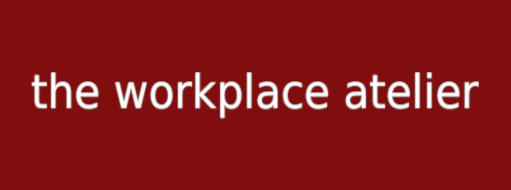As we slowly come to terms with the pandemic, slowly, we will return to where we used to work. Whereas few doubt that things will go back to the way they were, it is still a little foggy what the so-called “new normal” pertains. How do we actually go into a “new normal” at a workplace that might feel a little old?
First we need to acknowledge that the rushed and urgent transfer to home office was in principle successful, even if exhausting. Organisations that maintain a traditional command- control leadership attitude learnt that their staff was digitally literate and responsible. They will clearly be challenged when they try an flip the switch back to a working at office only mode. Even organisations experienced in remote working were taught that they must engage more consciously with issues such as wellbeing and duty of care, putting these on the managerial priority list.
Second the pandemic has triggered an acceleration in the Fourth Industrial Revolution. Organisations will need to learn to continually navigate through disruptive and complex environments to thrive in future too. Learning is becoming a central notion of survival. There is some debate that managerial roles may shrink as their impact is increasingly taken over by autonomous knowledge workers who are innovative and accountable. However, a transformed role of leadership will still remain. This foresees leaders as a learning enablers and an exchange board or hub in the distribution and creation of information, knowledge and expertise.
The need to effectively leverage collective knowledge to shape pathways in complex scenarios in central to agility and therefore key to thriving in a volatile and complex world. Sharing and continually learning is pivotal. This makes a more fluid form of leadership, such as distributed leadership appealing.
Distributed leadership does not postulate that everyone is a leader, rather it propagates a more balanced appreciation of the dynamics of the leader-follower dichotomy. Followership is often seen as the “other side of leadership”, although without followership there is no leadership, making it an essential ingredient of the leadership formula, self-directed groups demonstrate that centric leadership is not needed for impactful followership. The over-emphasis on centric leadership is a relic from 20th century management theory. The distorted vision of followership being inferior in organisations are based on three main assumptions: 1) leaders are more important and than followers, and that everyone aspires to be be a leader; 2) following is a passive role that largely entails doing what one is told to do; 3) leadership is by default a more active role vis-à-vis followers, their purpose is to inspire and to act as role models. Followers do not really serve a purpose except to follow.
In distributed leadership, followership is not passive role. It does not imply taking the back seat. Followers are effective influencers with the ability to shape their leaders into better leaders. The ability of a follower to actively follow a leader is equally critical to the success of an organisation, as the leader’s ability to lead. A football team is an excellent example of this balancing act. There is only one captain and each player has their designated role and function. The overall aim of the team is to shoot as many goals as possible and win the game. This is best done by training together (teamwork) and sharing the ball (collaboration). It doesn’t matter who shoots the goals, the roles will remain the same. All players are needed and are equal on the field. They share leadership and followership in fluidity. The captain of the team will still be the captain of the team at the end of the game. The best goals will be shot when the ball is shared (collaboration).
Followership is built on three main pillars:
- Followers need to be involved in the shaping of their own role and the contribution it makes in the overall organisational strategy. In fact the organisational strategy could even be designed based on the strengths of the followership. This empowers followers who are able to step up to the challenge. To achieve this, leaders need to dialogue, not delegate; involve, not instruct; empower, not direct. The power of dynamic followership goes beyond coaching. It is about the leaders acknowledgment that leadership is consistently earned by followership.
- Collaboration is about a deep appreciation of what each individual can do and how much more the team can achieve together. This is not about the kind of teamwork where each member brings their skills to the table to reach a common goal. It is about learning together to create new knowledge and collective wisdom for scalable learning through iterative critical reflection and action. Collaboration focuses on strengths and demands open-mindedness and inclusiveness. It also implies a larger degree of flexibility of roles, excellent communication skills and creation of a safe space to give/receive constructive feedback. Leaders in organisations must overcome their silo thinking and behaviour to demonstrate collaboration themselves in order to enable this. In principle no leader should expect a follower do anything the leader would not do.
- Leaders and followers need to foster an environment of respect where there is also room for friction and conflict. Followers and leaders alike should be able to speak their mind and to make mistakes. If conflicts can not immediately be resolved, then parties must agree to disagree and readdress at a later stage. Courage includes the preparedness to challenge unconscious bias and assumptions that frame prevailing mind-sets. It is about the acceptance of how we are all different without judgment. Of fundamental importance is the courage to learn and also the ability to reiterate as well as willingness to change points of view in an informed manner.
In light of the above, when teams go back to work post pandemic, take a moment to reflect to together on your past years experience as a remote team. Gauge your strengths and learnings to transform your own leader-follower paradigm:
- Revisit your shared purpose: ask yourself how relevant are our goals? how do we prioritise our work as a team?
- Understand each member’s strength and constraints, desires and roles. Be open and candid in your feedback and praise
- Re-establish your working norms and re-assess your available resources for work based on insights gained
The pandemic has offered a unique opportunity for organisations to develop a sustainable, human-centric distributed leadership based on dynamic and purposeful collaboration. It is an expression of inclusiveness and a strong sense of ownership and belonging. Creating a team where followers and leaders are fully present in their roles and on equal footing in a passion to achieve what needs to be done is a fundamental part of agility and an organisations ability to thrive in an age of knowledge, technology and innovation.
About the author:
Neha Chatwani is an international organisational psychologist at the workplace atelier with extensive HR and OD experience. She is the editor of the volume Distributed Leadership: The Dynamics of Balancing Leadership with Followership (2017) and the author of Organisational Agility (2019), both published at Palgrave MacMillan.

